His brother was kidnapped and murdered by the Russians, his mother left to die. Now he wants answers
Kim Sengupta witnesses a Ukrainian commander confront the neighbours he suspects betrayed his family in their village

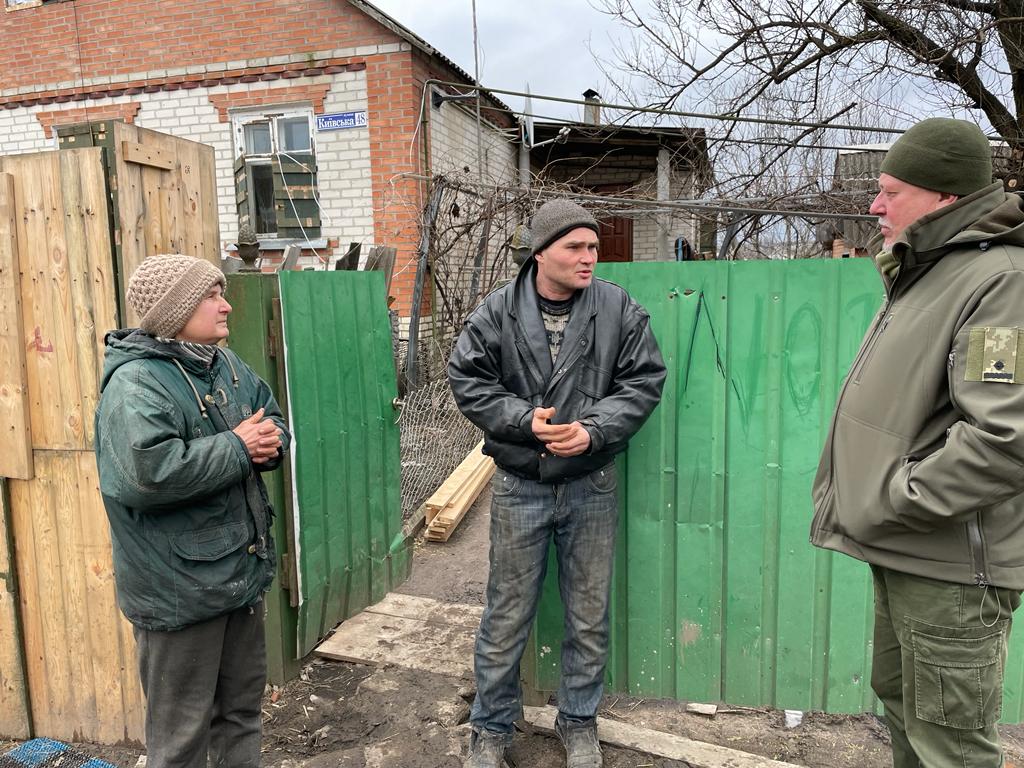
Your support helps us to tell the story
From reproductive rights to climate change to Big Tech, The Independent is on the ground when the story is developing. Whether it's investigating the financials of Elon Musk's pro-Trump PAC or producing our latest documentary, 'The A Word', which shines a light on the American women fighting for reproductive rights, we know how important it is to parse out the facts from the messaging.
At such a critical moment in US history, we need reporters on the ground. Your donation allows us to keep sending journalists to speak to both sides of the story.
The Independent is trusted by Americans across the entire political spectrum. And unlike many other quality news outlets, we choose not to lock Americans out of our reporting and analysis with paywalls. We believe quality journalism should be available to everyone, paid for by those who can afford it.
Your support makes all the difference.“My brother Andryi was kidnapped, tortured and murdered here, did you play a part in this? Do you know what they did with the body, where they buried him?” Major Aleksandr Osadchy is questioning two neighbours in the shattered community of Kamianka, eastern Ukraine.
Quietly, trying hard to stay calm, he tells of how his 85-year-old mother, Maria, died of starvation: ill, frightened and alone after his brother – who had been looking after her – was taken away by Russian troops. Her emaciated body, curled up in an effort to stay warm, was found six months later.
The neighbours, Natalya and Yuri Zdozovets, deny that they sold out Andryi, who was a former Ukrainian soldier and thus a target for the Russians. They admit being accused of collaboration by other residents, and have been questioned several times by SBU – the Ukrainian intelligence service – and the police. But they were not, they repeat, involved in the killing.
“There were rumours that he was shot by the Russians, but I am not sure how true that is,” says Natalya Zdozovets hesitantly. Her son Yuri interjects to tell Maj Osadchy: “You must understand that the Russians and LNR [the separatist Luhansk People’s Republic] troops already had a list of those who had been in the Ukrainian army, they didn’t need anyone’s help to find them.”
The extraordinary confrontation is another brutal aspect of this war – revelations of treachery and betrayal in communities, secret killings, abduction and disappearances, and the desperate search for truth by bereaved families.
The Ukrainian parliament brought Article 111-1, “Collaboration Activities”, into the country’s criminal code soon after Vladimir Putin’s invasion to deal with domestic subversion. Most of the resulting charges so far have been against Ukrainian officials who worked with the Russians, rather than fifth columnists.

Most prosecutors’ offices across the country acknowledge they simply lack the resources to immediately pursue cases of collaboration, and deaths may have resulted. In Kharkiv, criminal investigators say they are looking into 490 unidentified bodies in the wider region surrounding Kamianka, and many more are expected to be found.
Standing outside their house, with dogs barking, the Zdozovets continue their denials. Maj Osadchy, 60, waits. There appears to be an impasse between the accused and the accuser as they stand in the bitter cold and whipping wind, the road a churn of ice and mud. Both parties lapse into silence.
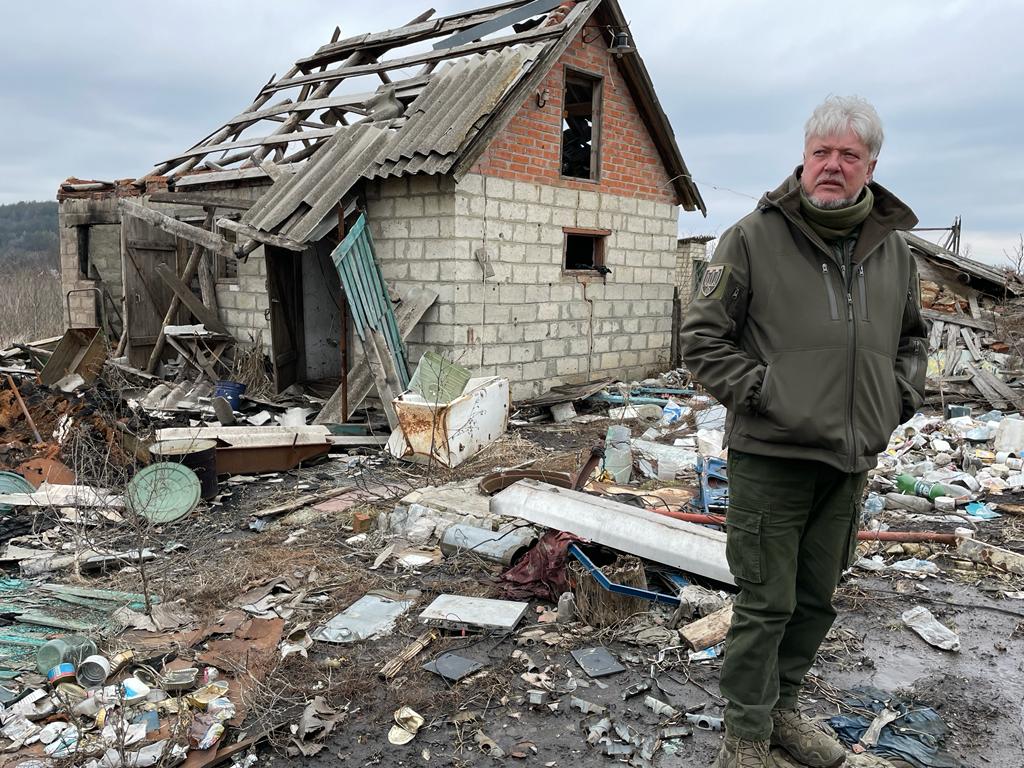
Yuri wrings his hands, his eyes dart sideways, and he licks his cracked lips. His mother’s look flickers between him and the major and the gun in the major’s holster.
Yuri blurts out: “I only know what the LNR soldiers told me. They went to your mother’s house, she was in the basement. They found your brother, and interrogated him because he was in the Ukrainian military, and then, and then he was executed, that’s all I know, I swear.... There are a few people who may know what happened to Andriy, I’ll tell you who they are.” Maj Osadchy nods. “Let’s start, I’m listening...” he says. Yuri gives three names.
Alongside the demand for justice from those who have lost their loved ones has come, for many, the need for a reckoning. Maj Osadchy, of the 226 “the Cossacks” Battalion had come to meet the family he believed were informers armed with his service Makarov pistol. He had smuggled it out of the house, hiding it from his wife who had asked him repeatedly – pleaded with him – not to take the gun with him.
“I felt so sad about what had happened to my poor mother, my poor brother, the suffering they went through. These people are not telling the truth, I know that. I feel very angry and for a moment I didn’t know what I was going to do, but I controlled myself,” he says.

“At the end we can’t be like them on the other side, those who kill for the sake of killing. I’ll find out what happened to my brother step by step. I’ll keep coming back to these people. It’s interesting how they started remembering things when they saw I was in the military and I was armed,” he adds.
Natalya Zdozovets had also started remembering details. “It was me who took the [emergency] services people to your mother’s house. The Russians had said she was living in the basement. I took the rescuers there when the Russians left. I didn’t go down to the basement, I was too afraid. We heard how they found her, what happened to her,” she crosses herself. “Who could think such a terrible could happen in a place like this? To our village?”
Kamianka in the Kharkiv oblast, off the main road to Donbas, was once a model village founded by a Russian aristocrat friend of Alexander Pushkin, who had settled there after a visit to Britain and returning with an English wife. It has beautiful views over dipping valleys of meadows and orchards in the summer, and has, over the decades, built up a reputation as a desirable place to live.

The local authority has established a school with special facilities for high achievers, a gymnasium, a park, a centre for local craftsmanship and an agricultural plant. A church with a much-admired cupola and altar was dismantled, with its stones used to build an airfield in Soviet times. The wooden church which replaced it was burned down in the current conflict by rocket fire.
Kamianka has now been wiped off the earth. It no longer officially exists, according to Ukrainian authorities, after becoming an arena for the biggest tank battle of the war – over control of the strategic hub of Izyum and its hinterland.
Of a population of 1,800 before the war, just over 20 now remain. There are around half-dozen houses which are still standing. Most have suffered damage: the one relatively intact belongs to the Zdozovets. They were one of the very few families to stay on after the Russians took over when almost all other residents had fled.
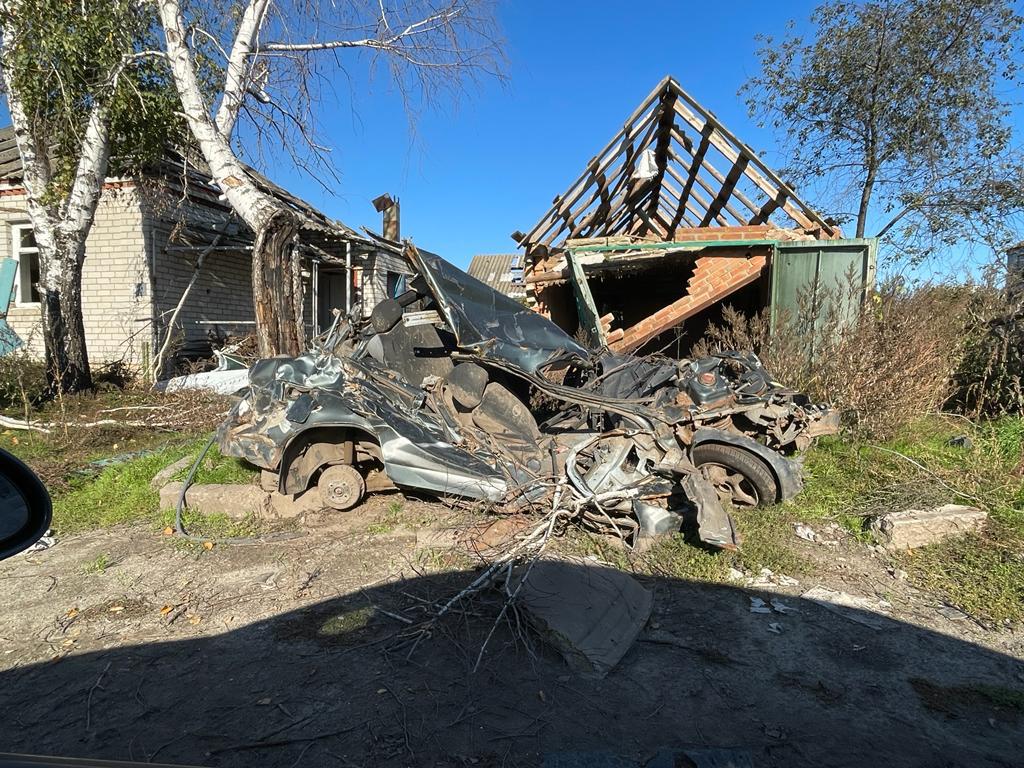
I visited Kamianka in October after hearing about the sheer scale of destruction there and its place for the battle for Izyum. Olha Nayeemova had returned that day with members of her family – negotiating the burnt-out cars and military vehicles, gouged roads with unexploded ordnance on the pavements – to salvage what she could from her home.
Russian soldiers had been quartered in her home and others surrounding it, and they had been hit by machine-gun fire and rocket-propelled grenades. “They looted what they could when they fled, so there really isn’t much left,” said the 70-year-old Ms Nayeemova. “Of course we are lucky, we are alive. They killed people, two young men were shot. They put some men into a ditch and threw in a grenade. An old man and a young boy were taken away and we never saw them again.
“But some families benefited during the occupation, that family at the back was the main one”, she said, pointing across gardens filled with debris. “The Russians used to go in there. There were no leaves on the trees during the occupation: we could see clearly what was going on. The Russians were there all the time. They took them food, they would talk to them and get directions. We stayed clear of that family.”
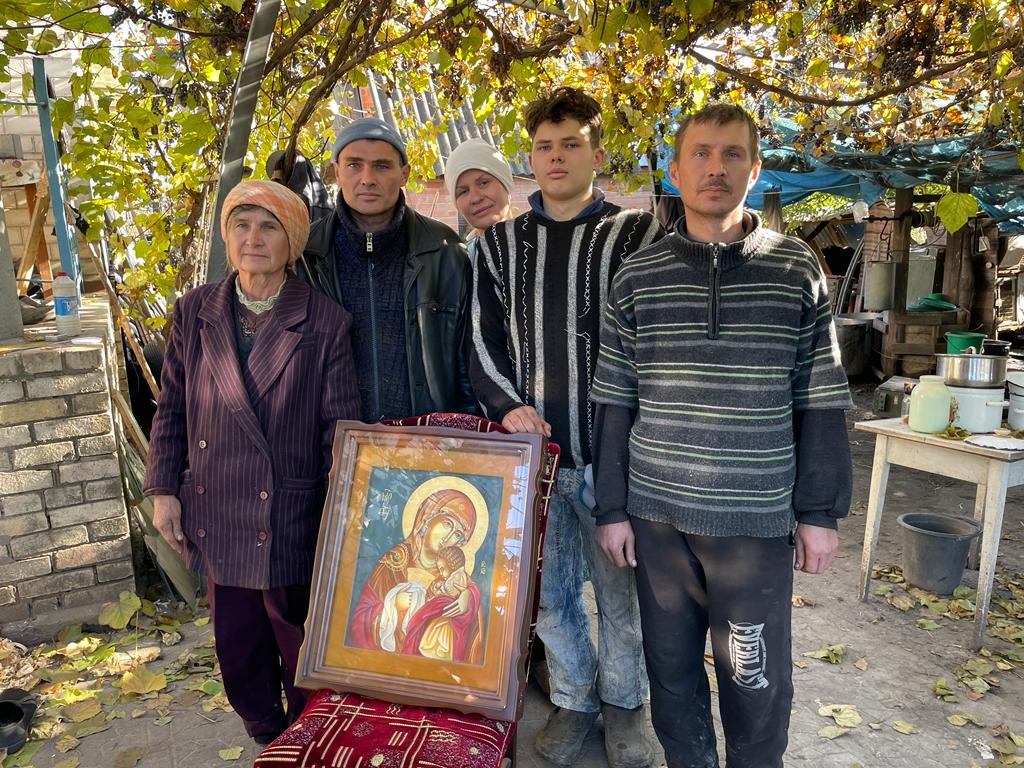
That family was the Zdozovets. When I met them in October they complained that they had been labelled as collaborators without any evidence. “People saw Russian soldiers come in here, but what could we do? The soldiers had guns, they wanted milk, they wanted potatoes. Sometimes they gave a little food in return,” said Natalya Zdozovets. “Just because we hadn’t been killed or injured they thought we were somehow on the Russian side. But we did not side with them, God protected us.”
One source of divine protection, believed Yelena, the 46-year-old wife of Yuri, was an icon of the Madonna from the local Russian Orthodox church. She had a dream several months before the war started that an icon must be placed there. It was commissioned by the family and delivered.
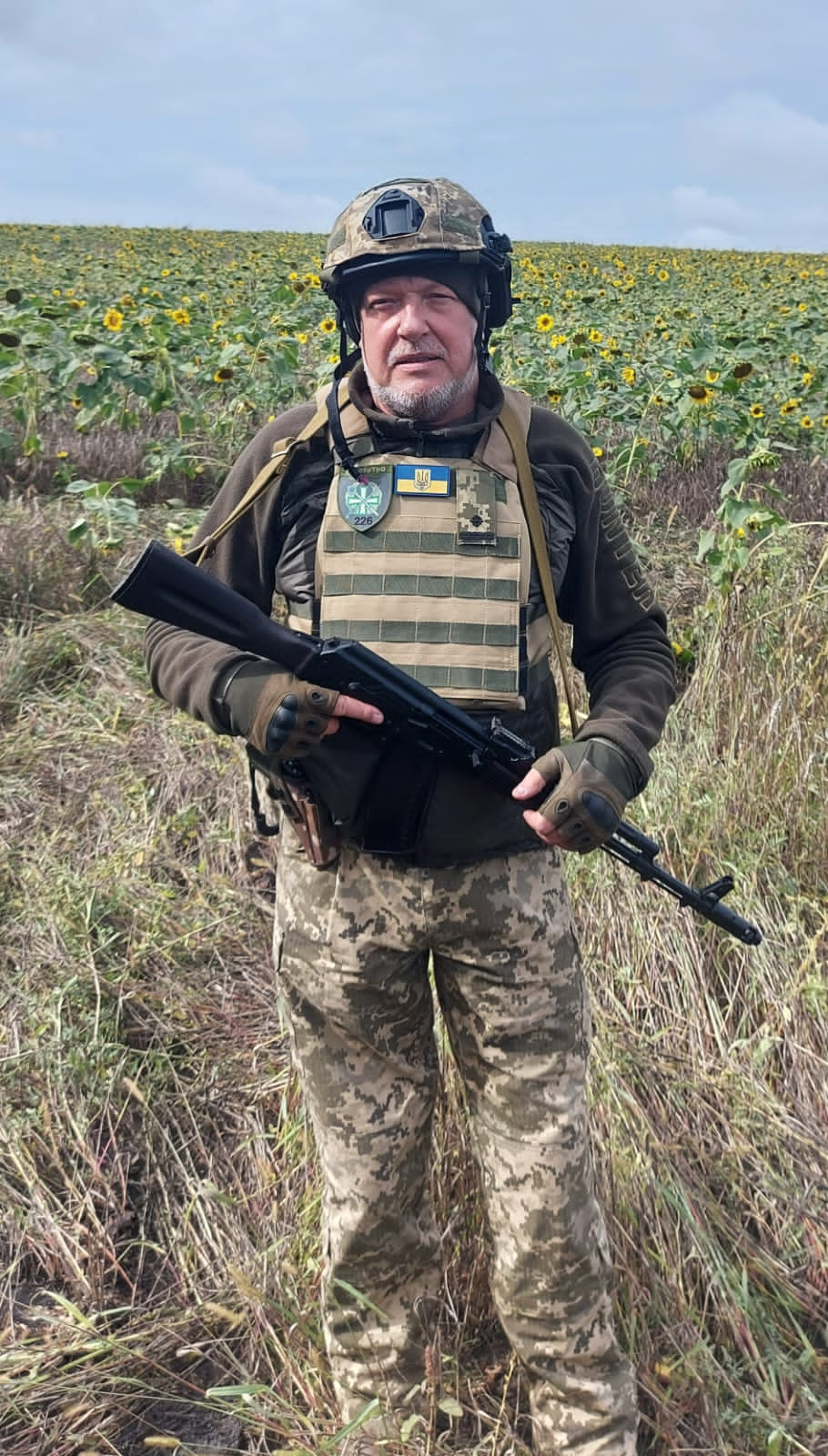
“We brought the icon home when the church got damaged and we got some other holy things from the church to save them... Maybe having the icon here helped in saving lives” she said. “But people say these things about us, that we are informers. The police and SBU have questioned us many times, the last time was just a few months ago ... it goes on.”
Yelena and Yuri have two sons, Jaroslav, 15, and Vladislav, 19. Vladislav, she says, was enlisted in the army and has been severely injured. She does not want to discuss which unit he was with, when or where he was injured and which hospital he has been taken to. One village resident claims Vladislav had joined LNR separatist troops, not the Ukrainian army, and was wounded in fighting in Kharkiv. The neighbour provides no evidence for this.
The Zdozovets tell me there have been summary killings by the Russians, including a former soldier shot dead near the village school. However, they fail to mention this to Maj Osadchy.
I had met Maj Osadchy when he and his battalion were in the middle of the fierce battle for Kharkiv, Ukraine’s second city and a much-desired prize for the Russians. In March, in between rounds of missiles, he told me that his mother had been killed in shelling at her home in Kamianka. His 53-year-old brother, Andriy, he said, had buried her in the village and then gone off to join his old army unit in the Donbas city of Slovyansk.
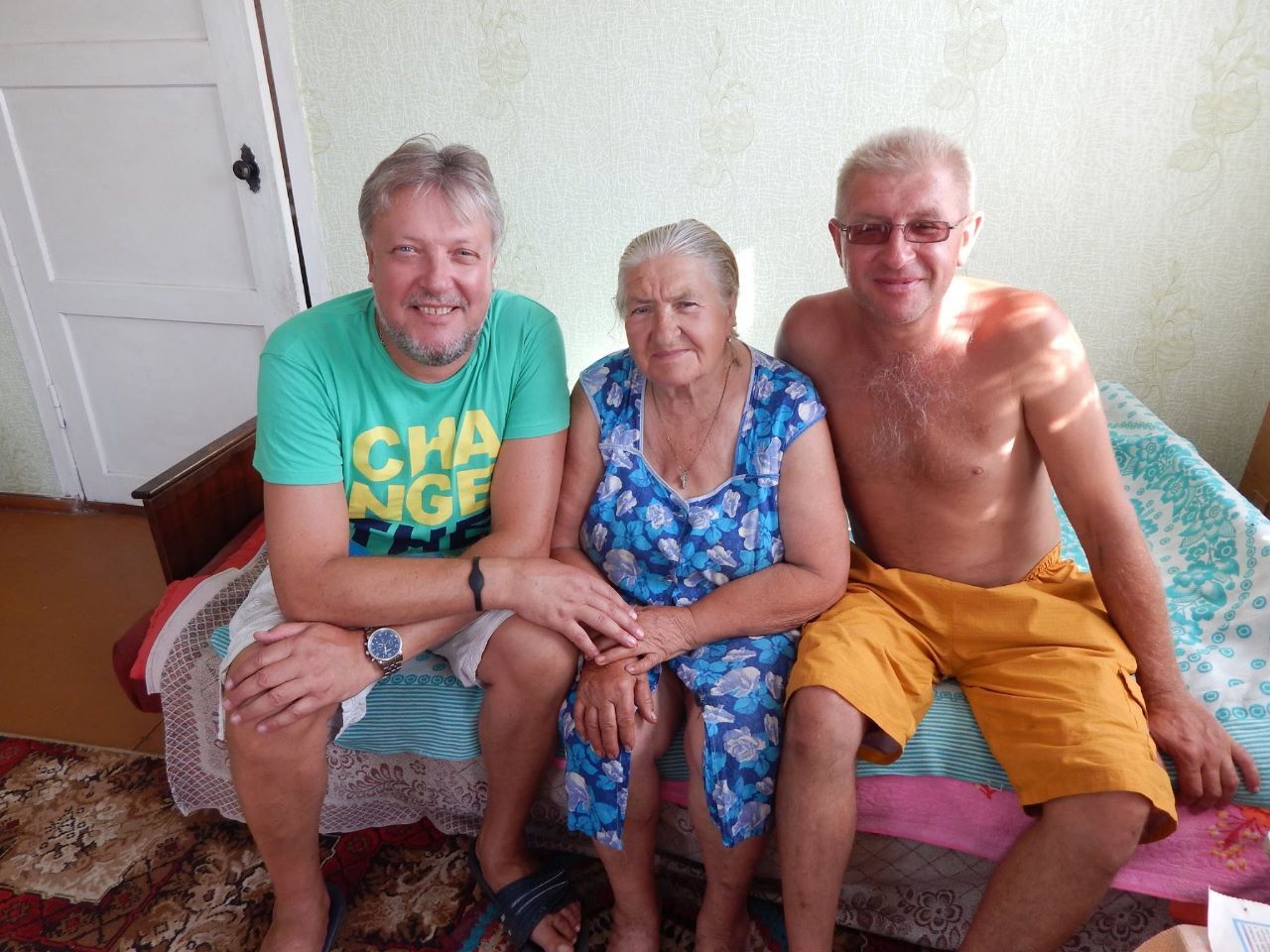
“Communications were very hard at the time, places were changing hands fast. I was told about my mother by some people and accepted what I was told”, he says. “I had been in regular phone contact with my brother and then that suddenly stopped; the number became dead around that time. Now I know that was when he was arrested and probably killed.
“A month later I tried again, and the phone number was back on. A voice speaking Russian with a Chechen accent answered. He became threatening, saying he was going to find and kill me. I realised that the Russians had Andriy’s phone, but knew nothing more. I thought he may have dropped it on the frontline. But maybe I was speaking to my brother’s killer.”
It was not until the autumn that Maj Osadchy discovered exactly how his mother had died. He went to Kamianka to lay her to rest in the local cemetery where three generations of Osadchys are buried. The family home, he discovered, had been looted and vandalised. Discarded Russian uniforms and ration packs lay on the floor.
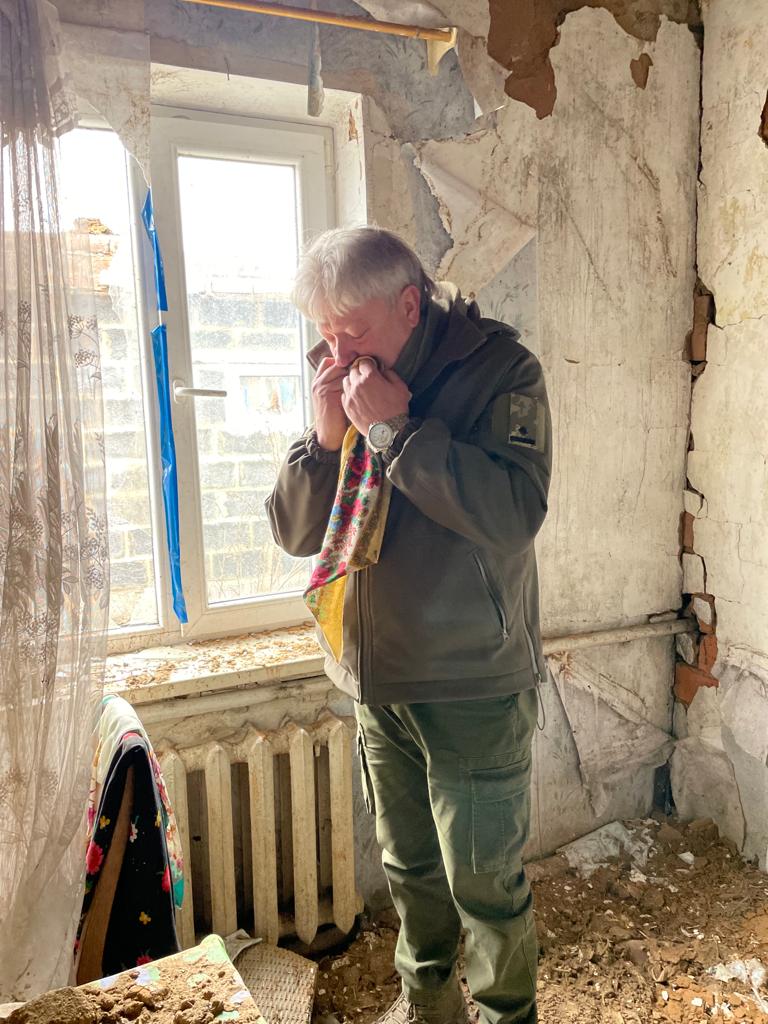
“While I was at Kamianka for the funeral I met Yuri [Zdozovets] and his brother Mykola. I gave them some of the food and water I had brought for the villagers from Kharkiv. Someone told me that the brothers will know what happened to my mother and Andriy. He also told me to be careful of them but nothing more. I later found out that they were collaborators,” Maj Osadchy recalls.
“They said at the time they knew very little. But today they suddenly know a lot more. If they tell me where I can find Andriy’s body it would be a huge step. I will bury him next to my mother, Maj Osadchy says. "He looked after her every day I saw them often before the war. She must have been so scared at the end with neither of us there. We were a close family.
“Funny, in my mother’s house today, in all the damage, I found a scarf she liked wearing, there is a nice photo of her with it. The scarf was really clean, as if new despite all the dirt around. Maybe it was a message to say how much she loves us, and a message to me to find my brother who’s alone somewhere and bring him home.”



Join our commenting forum
Join thought-provoking conversations, follow other Independent readers and see their replies
Comments